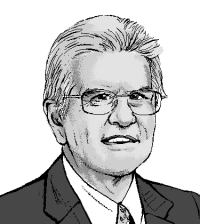Memories of persecution
Traveling across Europe elicits constant double-takes for someone of the baby-boom generation. Just as you are relishing the sights in a lovely city like Prague, Dresden or Budapest, you are startled to see an object or a historical marker that reminds you how very recently these places belonged to a sinister political and cultural order.
Is it really just a quarter century ago that nations like Czechoslovakia and East Germany were part of a Soviet empire that threatened to engulf Western Europe? Once upon a time—and not long ago—there was another Europe.
Equally consigned to oblivion, at least for most Americans, is the religious story of communist Europe, in which Christians suffered horrific persecutions. Wandering in Hungary today, you will casually see signs with names like Recsk and Kistarcsa, with no warning that in the 1950s these were the sites of lethal concentration camps in which Christian clergy and laity were murdered in the thousands.
Read our latest issue or browse back issues.
It was at Kistarcsa, for instance, that Bishop Zoltán Meszlényi was martyred in 1951. In the Czech Republic, you might see the old uranium mining complexes of Pˇríbram and Jáchymov without realizing how many religious enemies of the state died here in the 1950s undergoing forced labor that amounted to torture.
Through the 1960s, American Christians, especially Catholics, remained highly attuned to this situation as they followed the career of a heroic resister like Hungarian cardinal József Mindszenty. Today, though, the persecutions seem to belong to ancient history, as remote as the time of Diocletian.
That amnesia reflects the totally changed political situation and the restoration of religious freedom: who could imagine such horrible deeds happening in such benevolently European and democratic settings? The new Hungarian constitution even vaunts the nation's Christian heritage. Yet it would be tragic if such a dreadful part of Christian history were lost to collective memory, if only because later generations have so much to learn from the various strategies that oppressed churches adopted in the face of crisis.
The need to keep these memories alive drove a heroic scholarly enterprise, one that makes it possible to re-examine those persecutions in astonishing detail. The project began when Anglican canon Michael Bourdeaux visited Moscow in the 1950s. He encountered the city's surviving Orthodox churches and thereafter made it his life's work to tell the West about the Orthodox and about other religious denominations living under communist rule.
In 1969 Bourdeaux founded Keston College in a London suburb and later moved it to Oxford. For 20 years, Keston was a center for the academic study of religion in the Eastern bloc and the primary source to which media and political leaders could turn for accurate and up-to-date information.
Providing reliable news might not seem like an unusual role for the college, but Bourdeaux's access to sources on the ground was astonishing in the context of the closed and paranoid Soviet empire of the time. Keston played a critical role in keeping pressure on the Soviets as they made their stumbling moves toward liberalization. In 1984, Bourdeaux won the Templeton Prize.
In later years, Keston became the victim of its own success. Although religious liberty issues remain alive in the new Russia, they are nothing like as prominent or as newsworthy as they were in the epic days of the cold war, and the college faded from the headlines. But Keston retained its staggering archive, which in 2007 found a new home at Baylor University in Texas.
Baylor's Keston Center is a massively underexplored resource, which offers rich pickings for researchers in European history or in the larger picture of modern Christianity. Besides the expected books, news clippings and printed records, Keston has complete runs of the various atheist and anti-religious magazines that the Soviets and their puppets ran to combat the influence of faith, with all the related cartoons and posters.
You could spend days just sorting through the visual materials from 1917 onward, particularly the propaganda posters presenting venomous attacks on Christians, Jews and Muslims. Contemplating the visuals alone, one can trace how confidence in socialist-scientific materialism reached its pinnacle with the Soviet space program and declined through the miserable Breznev years.
And then there is the religious samizdat, the underground "self-published" materials that Soviet believers produced through the darkest years, at risk of imprisonment or worse. Among the thousands of clandestine publications at the Keston Center are petitions, news sheets, and memoirs. One evocative item is the 1960s trial transcript of a Russian Baptist organizer, surreptitiously recorded on fragments of cloth. It's a relic of a terrifying, lost world—but not one that should ever be forgotten.







